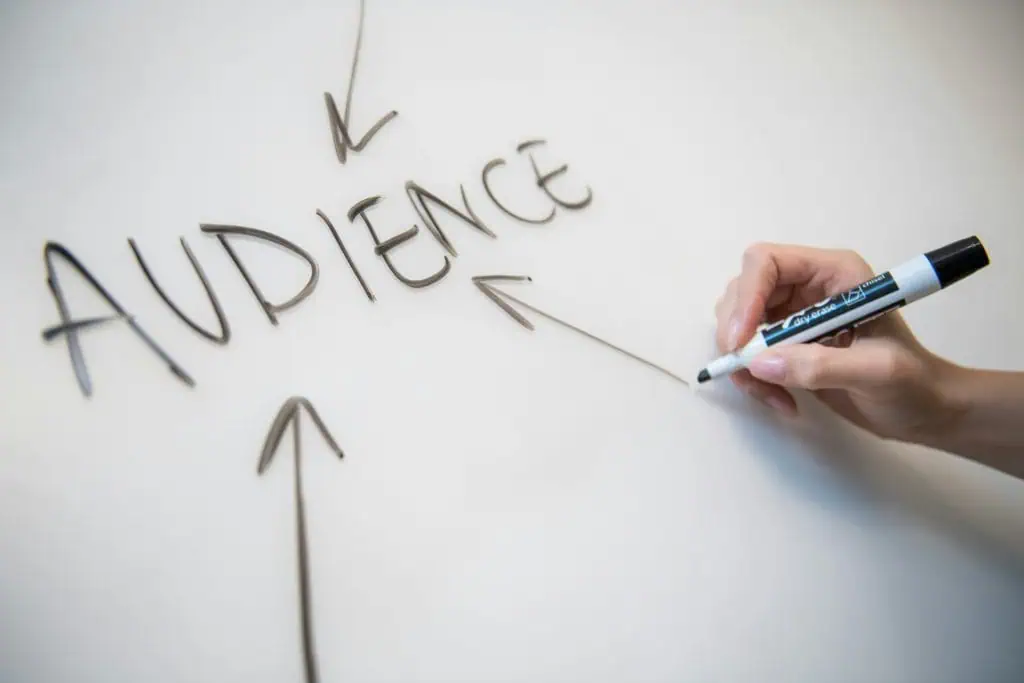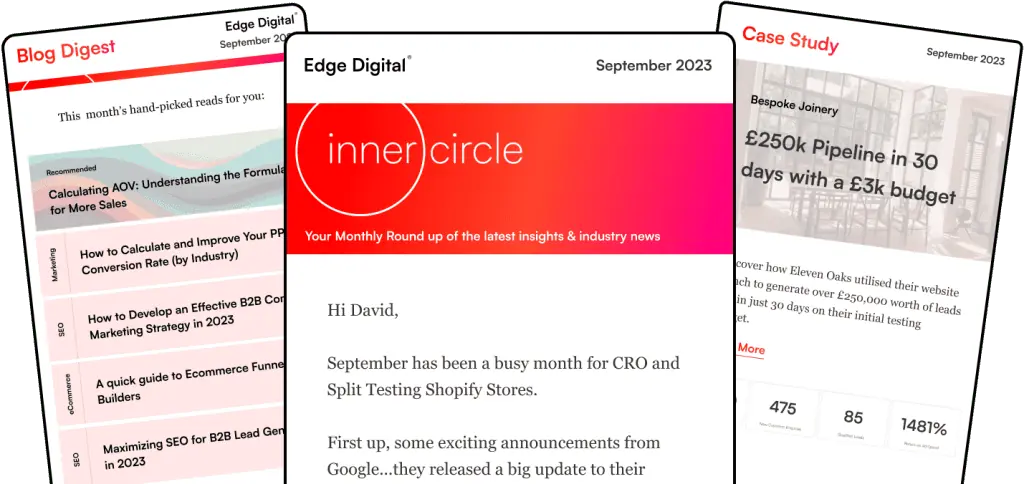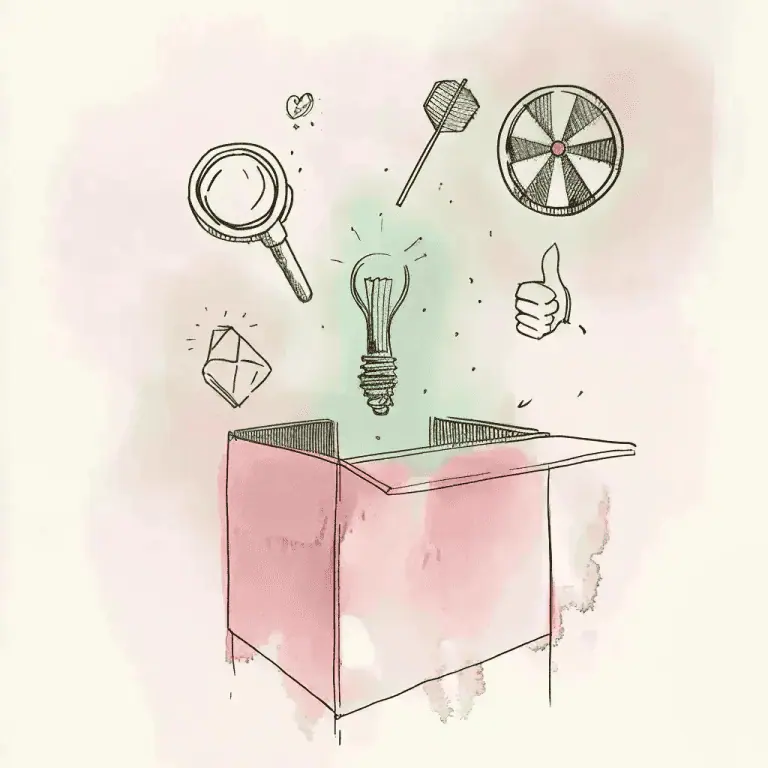Wouldn’t it be great if you could guide potential customers through the buying process, increase conversion rates, and drive revenue growth with ease? The good news is, you can achieve all this and more with a well-structured B2B sales funnel. Unlike B2C sales, business to business sales involve longer sales cycles, multiple decision-makers, and larger transactions. In this blog post, you’ll learn the ins and outs of creating, optimizing, and managing a B2B sales funnel that delivers results.
Discover the importance of a B2B sales funnel, key components, strategies for aligning marketing and sales teams, best practices, and real-life success stories that demonstrate the power of a well-implemented funnel. You’ll also find practical tips and insights to help you navigate common challenges and leverage technology to enhance your sales process.

A well structured B2B sales funnel is absolutely paramount
Key Takeaways
Unlock the power of B2B sales funnels with key components like identifying target audiences, creating engaging content and nurturing leads.
Leverage technology to streamline processes, track performance metrics and align marketing & sales teams for success.
Implement best practices such as setting SMART goals & maintaining post purchase relationships for maximum effectiveness.
The Importance of a B2B Sales Funnel
Any successful B2B sales process hinges on the sales funnel. It guides potential customers through the buying process, enhances conversion rates, and escalates revenue. An efficient B2B marketing funnel paves the way for quality leads, a streamlined sales pipeline, and a well-structured B2B customer journey.
The stages of a B2B marketing funnel are:
Awareness Stage
Interest Stage
Consideration Stage
Decision
Action
Each stage of the B2B sales funnel stages demands a unique approach from sales and marketing teams, making their collaboration essential for a seamless customer experience. The B2B sales funnel model helps you develop a marketing strategy that targets potential customers from the top of the funnel to the bottom, ensuring no opportunity is missed.
In contrast to a B2C sales funnel, the B2B sales funnel typically involves more complex decisions, longer sales cycles, and a higher level of interaction between sales reps and prospects. Given this complexity, a well-defined and optimized B2B sales funnels become pivotal for guiding prospects through their buyer’s journey and turning them into paying customers.
Key Components of an Effective B2B Sales Funnel
Several key components constitute an effective B2B sales funnel, such as:
Identifying target audiences
Generating engaging content
Lead generation, where marketing and sales play a synchronized role in generating and qualifying leads
Nurturing leads
Monitoring performance metrics
By focusing on these components, you can create a buyer-focused sales funnel that drives results and helps you achieve your business goals.
In the upcoming subsections, we’ll explore each of these components in depth, identifying their contribution to a fruitful B2B sales funnel, and sharing strategies to optimize your approach.
Identifying Your Target Audience for Lead Generation
Creating a buyer-focused sales funnel necessitates a thorough understanding of your target audience’s needs, preferences, and pain points. Without this knowledge, you run the risk of developing a sales funnel that fails to resonate with your prospects and misses the mark when it comes to driving conversions.
To identify your target audience, start by analyzing your site metrics, RFPs, conversion rates, mailing lists, and other customer interactions with your business. Once you’ve gathered this data, create an Ideal Customer Profile (ICP) that captures the characteristics of your most valuable customers. With a clear understanding of your target audience, you can develop tailored strategies that guide them through the buying process and maximize your chances of success.
In the B2B buying process, it is crucial to consider the involvement of multiple stakeholders. This means securing consensus and approval from numerous decision-makers to achieve a successful sale.
Reaching your ideal customers involves a combination of approaches, including:
In-person visits
Cold calls
Email and text sequences
Social media networks
Content marketing
Search engine optimization (SEO)
By leveraging these channels, you can connect with your target audience, build awareness, and nurture them through each stage of the sales funnel.

Identifying your target audience will drive sales
Developing Engaging Content
For attracting and retaining prospects, and thereby achieving higher conversion rates, it’s crucial to develop engaging content tailored to each stage of the sales funnel. A successful content strategy involves close collaboration between sales and marketing teams, ensuring that the content produced is relevant and resonates with your target audience at each stage of their buyer’s journey. This alignment ensures that the content supports the overall sales strategy.
Types of content that can be created for each stage of the B2B sales funnel include:
Blogs
Social media posts
Ebooks
White papers
Case studies
Customer testimonials
Customer training videos
For example, creating compelling case studies, educational blog posts, or how-to guides can effectively engage middle-of-the-funnel buyers and move them closer to making a purchase.
Remember that content is not a one-size-fits-all solution. By understanding your target audience and their needs at each stage of the sales funnel, you can create content that is both engaging and relevant, driving improved conversion rates and a stronger connection with your prospects.
Nurturing Leads Through the Funnel
Lead nurturing within the funnel holds a pivotal role in the B2B selling process. It involves providing relevant information, addressing concerns, and building trust with prospects at each stage of the funnel. By nurturing leads effectively, you can guide them through their buying journey and increase their likelihood of converting into paying customers.
One way to nurture leads is by setting up drip campaigns that automatically reach out to prospects at the right time, keeping them engaged and informed throughout their journey. Additionally, sales reps should be prepared to answer any questions that arise and maintain close contact with prospects, particularly at the evaluation stage of the sales cycle, where honesty and integrity play a crucial role in building trust.
Effective lead nurturing can significantly impact customer satisfaction and the overall success of your sales funnel. By understanding your prospects’ needs and preferences at each stage, you can tailor your approach to address their pain points, build trust, and ultimately drive conversions. Generating qualified leads is an essential component of this process.

Building trust and a good repour is a driving force for conversions
Tracking and Analyzing Performance Metrics with Customer Relationship Management
To optimize your B2B sales funnel for superior results, it’s fundamental to track and analyze performance metrics, emphasizing the importance of well-calibrated sales processes. By monitoring key metrics at each stage of the funnel, you can make data-driven decisions to refine your approach, identify areas for improvement, and maximize your sales outcomes.
Leading and lagging indicators are essential metrics to consider in a B2B sales funnel. Leading indicators, such as the number of leads generated or the conversion rate at each stage, provide insights into the effectiveness of your sales process. In contrast, lagging indicators, like revenue earned or customer satisfaction, reflect the outcomes of your sales funnel.
Standardizing the sales process can contribute to the success of your B2B sales funnel by:
Establishing clear guidelines and processes for your sales team
Streamlining the sales pipeline
Enhancing productivity
Improving overall performance.
Accurate data is key to the success of a B2B sales funnel, so always ensure that your performance metrics are reliable and up-to-date.
Aligning Marketing and Sales Teams for Success
To ensure a seamless customer journey, improve lead qualification, and boost the chances of deal closures, alignment of marketing and sales teams is paramount. When both teams work together, the customer journey becomes more streamlined, and the chances of closing deals are significantly higher.
Additionally, specialized software solutions, including customer relationship management (CRM) software, can streamline operations and improve productivity.
Collaboration between marketing and sales teams ensures that:
The right content reaches the right prospects at the right time
Both teams can better understand the needs and preferences of potential customers
They can tailor their approach accordingly
They can ultimately drive conversions.
A well-aligned marketing and sales team can contribute to a more efficient sales funnel by:
Reducing the time and resources required to generate leads and close deals
Developing strategies that effectively guide prospects through each stage of the funnel
Resulting in a more cohesive and successful sales process
Overcoming Common B2B Sales Funnel Challenges
Strategic planning and continuous optimization are required to overcome common B2B sales funnel challenges, including short attention spans and intricate decision-making processes. By addressing these obstacles head-on, you can improve the effectiveness of your sales funnel and drive better results for your business.
Sales professionals need to possess a diverse set of skills and knowledge to navigate the complexities of B2B sales effectively.
One way to tackle these challenges is by leveraging technology, such as CRM and marketing automation tools, to streamline processes and provide valuable insights into customer behavior. Additionally, adopting best practices like setting clear goals, nurturing leads, and maintaining strong post-purchase relationships can help address common challenges and boost conversions across the B2B sales funnel.
Continuous optimization, including regular analysis of sales data and testing new strategies, can also play a crucial role in overcoming B2B sales funnel challenges. By staying agile and adapting your approach based on the insights you gather, you can refine your sales funnel, identify areas for improvement, and drive success in your B2B sales efforts.
Leveraging Technology to Enhance Your B2B Sales Funnel
Technology, including CRM and marketing automation tools, can boost the effectiveness of the B2B sales funnel by streamlining the transaction of products and services from one business to another, improving communication, and generating valuable insights. By adopting these tools, you can simplify the complex decision-making processes in the B2B sales funnel, enabling your team to focus on building relationships and increasing sales.
CRM systems, for example, can help you track and manage customer interactions, organize data, and automate tasks. This not only improves efficiency but also helps your sales team better understand customer needs and preferences at each stage of the funnel. Marketing automation tools, on the other hand, can help lighten the workload of your sales reps by automating repetitive tasks and freeing up their time to focus on more strategic activities.
Investing in technology can greatly improve the effectiveness of your B2B sales funnel, enabling your team to work more efficiently, make data-driven decisions, and ultimately drive better results for your business. By embracing new tools and technologies, you can stay ahead of the curve and ensure the success of your sales funnel.
B2B Sales Funnel Best Practices
The effectiveness of your sales process can be considerably enhanced by adopting B2B sales funnel best practices. Key best practices include:
Setting clear goals
Prioritizing lead nurturing
Automating processes where possible
Maintaining strong post-purchase relationships
Utilizing the SMART goal framework can help you develop clear objectives for each stage of your sales funnel, ensuring that your team stays focused and on track. The SMART framework stands for:
Specific: Clearly define what you want to achieve
Measurable: Set metrics to track progress and success
Achievable: Set goals that are realistic and attainable
Relevant: Align your goals with your overall business objectives
Time-bound: Set a deadline for achieving your goals
Tracking progress regularly can also significantly increase your chances of hitting your sales goals. Research shows that monitoring performance each week can boost success rates by up to 76%.
Once a deal is closed, maintaining a positive relationship with the customer is crucial for continued success. Keeping communication lines open and providing ongoing support can help ensure customer satisfaction and increase the likelihood of repeat business and referrals.
Real-Life B2B Sales Funnel Success Stories
B2B sales funnel success stories from real-life scenarios exhibit how a well-structured and optimized sales funnel can fuel revenue growth and customer satisfaction. These stories showcase how businesses have effectively leveraged their sales funnels to achieve success, providing valuable insights and inspiration for your own sales efforts.
One such success story involves a company that implemented a data-driven approach to optimizing its sales funnel. By closely monitoring key metrics at each stage, the company was able to identify areas for improvement, refine its strategies, and ultimately drive significant revenue growth.
Another example is a business that successfully aligned its marketing and sales teams, resulting in a more streamlined customer journey and higher conversion rates. By working together, the teams were able to:
Develop tailored strategies that resonated with potential customers
Guide customers through each stage of the funnel
Ultimately lead to increased sales and customer satisfaction.
Summary
In conclusion, a well-structured and optimized B2B sales funnel is essential for guiding potential customers through the buying process, increasing conversion rates, and driving revenue growth. By understanding the key components of an effective sales funnel, aligning marketing and sales teams, and adopting best practices, you can create a sales process that delivers results.
Remember to continuously monitor and optimize your sales funnel, leveraging technology and data-driven insights to enhance its effectiveness. By staying agile and adapting your approach based on the insights you gather, you can overcome common challenges, boost conversions, and ultimately drive success in your B2B sales efforts.

Frequently Asked Questions
What is a B2B sales funnel?
A B2B sales funnel is a sequence of stages designed to convert business prospects into paying clients, helping to increase ROI.
How do you create a sales funnel in B2B?
Creating a B2B sales funnel requires setting your goals and objectives, understanding your target audience, organizing your team, choosing the right channels, creating assets, and tracking your progress. This should be combined with stages such as awareness, interest, evaluation, engagement, and action, as well as understanding customers’ demands and ensuring ease of communication at every stage of the funnel.
Do funnels work for B2B?
Yes, funnels can work for B2B. By measuring performance through B2B marketing metrics, you can easily evaluate which strategies are successful and make the necessary adjustments to help buyers move down the funnel and increase conversion rates.
How can I identify my target audience in a B2B sales funnel?
Identify your target audience in a B2B sales funnel by analyzing metrics, RFPs, conversion rates, and mailing lists to create an Ideal Customer Profile (ICP).
What types of content should I create for each stage of the B2B sales funnel?
Create tailored content such as blogs, social media posts, ebooks, white papers, case studies, customer testimonials, and training videos for each stage of the B2B sales funnel.



